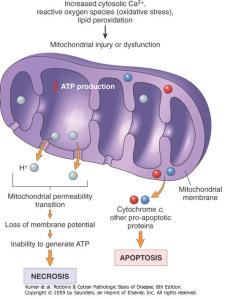This essay was one of Transhumanity’s biggest hits last month, getting about 1200 hits in its first week, as well as 87 up-votes and 93 comments on Reddit within 2 days. A shortened version is currently the 3rd most-viewed article on ImmortalLife
“Our hope of immortality does not come from any religions, but nearly all religions come from that hope.” — Robert Green Ingersoll
Recent polls indicate that 80% of Americans and over 50% of global citizens believe in an afterlife. I argue that conceptions of death which include or allow for the possibility of an afterlife are not only sufficiently different from conceptions of death devoid of an afterlife as to necessitate that they be given their own term and separate designation, but that such afterlife-inclusive notions of death constitute the very antithesis of afterlife-devoid conceptions of death! Not only are they sufficiently different as to warrant their own separate designations, but afterlife-inclusive conceptions of death miss the very point of death – its sole defining attribute or categorical-qualifier as such. The defining characteristic is not its specific details (e.g. whether physical death counts as death if the mind isn’t physical, as in substance dualism); its defining characteristic is the absence of life and subjectivity. Belief in an afterlife is not only categorically dissimilar but actually antithetical to conceptions of death precluding an afterlife. Thus to believe in heaven is to deny the existence of death!
The fact that their belief involves metaphysical, rather than physical, continuation isn’t a valid counter-argument. To argue via mind-body dualism that the mind is metaphysical, and thus will continue on in a metaphysical realm (i.e. heaven), in this specific case makes no difference. Despite not being physical in such an argument, its relation to the metaphysical realm is the same as the relation of physical objects to the physical realm. It operates according to the “rules” and “causal laws” of the metaphysical realm, and so for all effective purposes can be considered physical in relation thereto, in the same sense that physical objects can be considered physical in relation to physical reality.
 The impact of this categorical confusion extends beyond desire for semantic precision. If we hope to convince the larger public of radical-life-extension’s desirability, we need to first convince them that death exists. If one believes that their mind will continue on after physical death, then the potential attraction of physical immortality becomes negligible if not null. Why bother expending effort to attain immortality if it is inherent in the laws of the universe? It becomes a matter of not life or death but of convenience. This is a major problem: if the statistics mentioned can be trusted, then over half of the world population, and over 4/5ths of the U.S.A, lack even the potential to see the attraction and advantage of life-extension!
The impact of this categorical confusion extends beyond desire for semantic precision. If we hope to convince the larger public of radical-life-extension’s desirability, we need to first convince them that death exists. If one believes that their mind will continue on after physical death, then the potential attraction of physical immortality becomes negligible if not null. Why bother expending effort to attain immortality if it is inherent in the laws of the universe? It becomes a matter of not life or death but of convenience. This is a major problem: if the statistics mentioned can be trusted, then over half of the world population, and over 4/5ths of the U.S.A, lack even the potential to see the attraction and advantage of life-extension!
Widespread public awareness of and desire for radical longevity is important because it is our best tool for achieving it. One promoter is more effective — that is, has more of an impact on how soon indefinite longevity is realized- than one researcher working on life-extension. One promoter can get their message to scores of people per day. Conversely many researchers have little say on what they want to work on, or the scope and uses for what they work on. One must be conservative to get research grants, and the research directions taken in any science discipline is more influenced by public opinion than the opinion of individual researchers. We can get more traction by influencing public opinion, per unit of time or effort (damn these unquantifiable metrics!) than with pragmatic research. If we get widespread support then funding for research will come.
 The preponderance of atheists in the Transhumanist community is not a coincidence. Only through godlessness can each become their own god – in which case god-as-superior-being becomes meaningless, and god-as-control-of-self-fate, god-as-self-empowerment and god –as-self-legitimation, self-signification-and-self-dignification are the only valid definitions for such that remains. Autotheism encompasses atheism because it requires it (with the possible exception of co-creator theologies). Atheism is still to be valorized and commended in my opinion, for it exemplifies the resolute acceptance of freedom and ultimate responsibility for what we are and are to become. To be an atheist un-paralyzed by fear is to take for granted the desirability of one’s own freedom and lawless godfullness. On the other hand, successful intersections of religious thinking and Transhumanism do exist, as exemplified by the Mormon Transhumanist Association — whose success lies I think in its emphasis on co-creator theology (Mormons believe that it is Man’s responsibility to “grow up” into God – and if man and god are on equal footing, then where lie the dog, titan and grandFather?). Thus while belief in heaven and by consequence all religions that include or allow for conceptions of an afterlife constitute a massive deterrent to the widespread popularity if immortalism, it also constitutes, in utmost irony, one of its greatest potential legitimators due to its potential to evidence immortality as a deep-rooted human desire that transcends cultural distance and historical time.
The preponderance of atheists in the Transhumanist community is not a coincidence. Only through godlessness can each become their own god – in which case god-as-superior-being becomes meaningless, and god-as-control-of-self-fate, god-as-self-empowerment and god –as-self-legitimation, self-signification-and-self-dignification are the only valid definitions for such that remains. Autotheism encompasses atheism because it requires it (with the possible exception of co-creator theologies). Atheism is still to be valorized and commended in my opinion, for it exemplifies the resolute acceptance of freedom and ultimate responsibility for what we are and are to become. To be an atheist un-paralyzed by fear is to take for granted the desirability of one’s own freedom and lawless godfullness. On the other hand, successful intersections of religious thinking and Transhumanism do exist, as exemplified by the Mormon Transhumanist Association — whose success lies I think in its emphasis on co-creator theology (Mormons believe that it is Man’s responsibility to “grow up” into God – and if man and god are on equal footing, then where lie the dog, titan and grandFather?). Thus while belief in heaven and by consequence all religions that include or allow for conceptions of an afterlife constitute a massive deterrent to the widespread popularity if immortalism, it also constitutes, in utmost irony, one of its greatest potential legitimators due to its potential to evidence immortality as a deep-rooted human desire that transcends cultural distance and historical time.
 Thus we should neither be precisely denouncing nor promoting religion, yet neither should we ignore it and simply let it be. Rather we should be a.) heralding them for their keen insight into the true values and desires of humanity, while b.) taking care to show them that life-extension is nothing less than the modern embodiment of the very immortalist gestalt that they exemplified via conceptualizing an afterlife in the first place, and that belief in heaven held or maintained today goes against the very motivation and underlying utility that such a belief was trying to maintain and instill all along! By believing in heaven they are going against all it was ever meant achieve (the temporary satisfaction of our insatiable urge for life and escape from petty death) and all it was ever meant to constitute. This is not only the truest state of affairs, but the most advantageous as well. It allows us to at once ameliorate the problems caused by widespread belief in heaven, utilize the widespread and long-running belief in afterlife for the purpose of legitimizing immortalism to the wider and more conservative public, and showing the long historical tradition of a belief in or longing for immortality to constitute perhaps the most deep-rooted human value, desire and ideal (in both terms of historical time and in terms of importance, or a measure of how much it shapes our values, desires and ideals) while at the same time avoid irremediably insulting people who believe in an afterlife – which is detrimental only insofar as it risks having them ignore our cause not from reasoned conclusion but rather from seasoned spite.
Thus we should neither be precisely denouncing nor promoting religion, yet neither should we ignore it and simply let it be. Rather we should be a.) heralding them for their keen insight into the true values and desires of humanity, while b.) taking care to show them that life-extension is nothing less than the modern embodiment of the very immortalist gestalt that they exemplified via conceptualizing an afterlife in the first place, and that belief in heaven held or maintained today goes against the very motivation and underlying utility that such a belief was trying to maintain and instill all along! By believing in heaven they are going against all it was ever meant achieve (the temporary satisfaction of our insatiable urge for life and escape from petty death) and all it was ever meant to constitute. This is not only the truest state of affairs, but the most advantageous as well. It allows us to at once ameliorate the problems caused by widespread belief in heaven, utilize the widespread and long-running belief in afterlife for the purpose of legitimizing immortalism to the wider and more conservative public, and showing the long historical tradition of a belief in or longing for immortality to constitute perhaps the most deep-rooted human value, desire and ideal (in both terms of historical time and in terms of importance, or a measure of how much it shapes our values, desires and ideals) while at the same time avoid irremediably insulting people who believe in an afterlife – which is detrimental only insofar as it risks having them ignore our cause not from reasoned conclusion but rather from seasoned spite.
 We should consider two options. The first is to convince them that contemporary belief in heaven must be lain down, because it’s contemporary utility actually works against the original utility of a belief in heaven, as described above. A second option, which I think is less favorable but may be met with less ideological opposition, is that physical immortality constitutes the new embodiment of heaven on earth. Religious institutions like the like the Roman Catholic Church have ‚through the Vatican in this case, reformed their doctrine on evolution. Might the eschatological occurrences in the Book of Relevation be interpreted as the culminating intersection of the realm of Heaven with the realm of Earth? Might we try and incite them to change their doctrine on the afterlife, removing all metaphysical connotations due to society’s increasing secularization and the growing popularity of scientific materialism (also called metaphysical or methodological naturalism)? The change-in-doctrine over evolution, which they did presumably due to the large popularity of belief in evolution and their desire not to alienate so large a demographic,may be a precedent. Thus we should consider suggesting that they reinterpret their vision of heaven as a continuing physical realization of the perfect society on earth.
We should consider two options. The first is to convince them that contemporary belief in heaven must be lain down, because it’s contemporary utility actually works against the original utility of a belief in heaven, as described above. A second option, which I think is less favorable but may be met with less ideological opposition, is that physical immortality constitutes the new embodiment of heaven on earth. Religious institutions like the like the Roman Catholic Church have ‚through the Vatican in this case, reformed their doctrine on evolution. Might the eschatological occurrences in the Book of Relevation be interpreted as the culminating intersection of the realm of Heaven with the realm of Earth? Might we try and incite them to change their doctrine on the afterlife, removing all metaphysical connotations due to society’s increasing secularization and the growing popularity of scientific materialism (also called metaphysical or methodological naturalism)? The change-in-doctrine over evolution, which they did presumably due to the large popularity of belief in evolution and their desire not to alienate so large a demographic,may be a precedent. Thus we should consider suggesting that they reinterpret their vision of heaven as a continuing physical realization of the perfect society on earth.
 We should be portraying every religious crusade and mission to spread the word of god as a pilgrimage to bring immortality to the world! If one thinks that a specific moral, metaphysical or cosmological (i.e. religious) system is required to attain life after death, what else is their pilgrimage to spread god’s word but a quest to bring methodological means of immortality to humanity? Let us at once show believers in an afterlife why they are wrong, commend them for their insight into deep rooted and historically-extensive human values, beliefs and eternal longings, and win them over to our side!
We should be portraying every religious crusade and mission to spread the word of god as a pilgrimage to bring immortality to the world! If one thinks that a specific moral, metaphysical or cosmological (i.e. religious) system is required to attain life after death, what else is their pilgrimage to spread god’s word but a quest to bring methodological means of immortality to humanity? Let us at once show believers in an afterlife why they are wrong, commend them for their insight into deep rooted and historically-extensive human values, beliefs and eternal longings, and win them over to our side!
We have been hurling our rank rage at death and staunch demand for life at the unyielding heavens since before the recognized inception of culture! From the first dawn in Sumer and on, extending across the Abrahamic tradition, to touch upon Hinduism and the Chinese Faith, from Egyptian religion (with its particularly strong emphasis on the afterlife) to Norse mythology and beyond. Even Buddhism, which is often considered more philosophy than religion for its lack of a dogmatic stance on cosmology and an afterlife, has its versions of eternal life. Reincarnation is just as much a validating force for our desire for immortality as belief in an afterlife is. Reincarnation holds that non-metaphysical, physically-embodied immortality, through cyclic rebirth, is possible (and while metaphysics is involved, the belief nonetheless reifies the concept or corporeal rebirth). And indeed, even though they precede Nirvana and are still located within the “illusory” realm of Samsara, this only goes to further emphasize the predominance of physical forms of radical longevity, the desire for and belief in which both reincarnation and the Buddhist versions of “heaven” exemplify. According to the Anguttara Nikaya (a Buddhist text), there are several types of heaven in existence, all part of the physical realm, the inhabitants or “denizens” of which have varying degrees of longevity. The denizens of Cātummaharajan live 9,216,000,000 years; denizens of Nimmānarati live 2,284,000,000 years; denizens of Tāvatimsa live 36,000,000 years; denizens of Tusita live 576,000,000 years; and the denizens of Yāma live 1,444,000,000 years.
 Our history overflows with humanity’s upheaved herald of heaven, our exaltation of the existential extra, our fiery strife towards continued life. The mythic and religious historical traditions constitute at once indefinite longevity’s greatest contemporary obstacle and its greatest historical legitimator.
Our history overflows with humanity’s upheaved herald of heaven, our exaltation of the existential extra, our fiery strife towards continued life. The mythic and religious historical traditions constitute at once indefinite longevity’s greatest contemporary obstacle and its greatest historical legitimator.
“There can be but little liberty on earth while men worship a tyrant in heaven.” Robert Green Ingersoll
References:
Belief of Americans in God, heaven and hell, 2011 (2011). Retrieved March 22, 2013 from http://www.statista.com/statistics/245496/belief-of-americans-in-god-heaven-and-hell/
Poll; nearly 8 in 10 Americans believe in angels (2011). CBS News. Retrieved March 22, 2013 from http://www.cbsnews.com/8301-201_162-57347634/poll-nearly-8-in-10-americans-believe-in-angels/
Conan, N. (2010). Do You Believe In Miracles? Most Americans Do. In NPR News. Retrieved March 22, 2013 from http://www.npr.org/templates/story/story.php?storyId=124007551
Americans Describe Their Views About Life After Death (2003). The Barna Group. Retrieved March 22, 2013 from http://www.barna.org/barna-update/article/5-barna-update/128-americans-describe-their-views-about-life-after-death
43,941 adherent statistic citations: membership and geography data for 4,300+ religions, churches, tribes, etc. (2007). Retrieved March 22, 2013 from http://www.adherents.com/Na/Na_516.html



